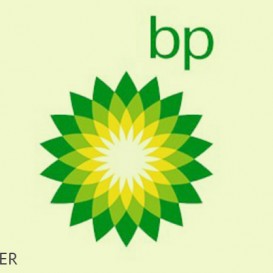Being heard in a crowded market place
27th February, 2017

Photo portrait of Rob da Costa
Being heard in a crowded market place: A Brighton & Hove Chamber of Commerce Bite-sized Learning Event.
On Tuesday 21st February, I attended a bite-sized learning event organised by the Brighton & Hove Chamber of Commerce and hosted by the Sussex County Cricket Club.
The speaker was Rob Da Costa from Da Costa coaching (www.dacostacoaching.co.uk) who presented an informative and practical talk entitled ‘Being heard in a crowded market, how to build marketing strategies that work’. I went along for two reasons; the first reason is that I am putting together a bite-sized session myself and I wanted to see how they are typically run and secondly, it’s always worth taking time out now and again to review your marketing efforts. So what did I take away from Rob’s talk?
The talk covered the importance of knowing your USPs (unique selling points). This might sound obvious but it can be easier said than done to clarify your USPs, especially if your business is service based. You might be known for your ‘exemplar level of service’ but that’s not a USP as it’s not unique. Plus, it’s advisable to advertise your USPs in your marketing efforts to help you stand out from your competitors. Here are a couple of questions you can ask yourself to help you clarify what your USPs are:
• What product/service do I offer my customers that my competitors do not?
• What guarantee do I offer to my customers, which my competitors are unable to match?
The answers could be, ‘I’m the UK’s only supplier of …’ and ‘guaranteed next day delivery’ for example.
As well as knowing your USPs, it’s just as important to know as much as you can about your customers. Knowing their likes and dislikes, amount of disposable income and buying habits etc. will enable you to target them more succinctly. Rob explained that creating customer personas is a helpful and practical way of summing up who your typical customers are. A customer personas is a study of a typical customer from one of your market segments. A customer persona should include:
• Name of the persona
• Job title and brief description of their role and business
• Salary / household income
• Location
• Age
• Gender
• Education
• Family
• Goals and Challenges
• Values and Fears
• Are they an influencer or a buyer?
Rob advised creating at least three personas to get a clear idea of the type of people who buy your product or who need your services. By doing this, you can refer to them when planning your marketing strategy and ask yourself whether your planned strategy will appeal to Barry (aka persona 1), Sally (aka persona 2) or Mark (aka persona 3) for example. When creating personas, try not assume things about your customers. Make appointments to visit your customers and talk to as many of them as possible, so you can create at least three personas that are based on a range of real people and not assumptions.
Rob also covered the importance of finding the right balance between the four areas of alignment; target market, product range/service offering, level of service and sale price of product range/service offering. Finding the right balance can be the difference between your business succeeding or failing. Take this alignment example of two UK supermarkets; Aldi vs Waitrose. Aldi market their products at the lower end of the market, offering great value, basic range, own brands etc. and due to their products being cheaper, customers except that the level of service, compared to Waitrose for example, will be inferior due to Waitrose being high end. Both business models are successful as they are aligned. It’s the age old saying of ‘you get what you pay for’ and there’s a lot to be said for this. A lot of businesses go out of their way to offer a high level of customer service but will either beat or match low prices to win the business. This is a very risky strategy as it tends to not be profitable. Obviously, those are two ends of the spectrum, but you could also be like Morrisons and cover the middle ground by offering a good product range and level of service, pricing your products accordingly - not too cheap or too costly for the level of service you are offering and therefore achieving a balance, meaning you shouldn’t be out of pocket. It’s a very difficult balance to achieve. You need to manage customer’s expectations and try to convey the value of your product or service, while managing the time, energy and money you expend on each customer.
You should advertise the value of your product/service by explaining how it can fulfil your customer needs, rather than singing the praises of the product/services on face value. For example, if you are trying to sell the design and build of e-commerce websites using your bespoke CMS (content management system) you could detail the increase in sales that your current customers have received since getting their websites redesigned and how much time and energy they have saved using your CMS due to its ease of use compared to their previous site. This is the value in your service, compared to just detailing how nice and aesthetically pleasing a new website would be. Clients will be more likely to purchase your product/service because of the added value and ideally you want to make your products/services desirable as your customers are likely to pay more for it, or at least not quibble over the price.
Another useful take away from Rob’s presentation was how to recognise holes in your sales funnel and how to rectify them. Take a look at this slide from Rob’s talk:
![]()
It shows how offering to help your customers by sharing helpful information relating to your industry either via blogs, newsletters/e-shots, white papers, video tutorials etc. can generate orders. Creating and sharing useful content is called a ‘content marketing strategy’. By regularly creating and sharing useful content it shows your customers that you know what you’re talking about and can be trusted to deliver the product/service you offer. It also helps you service different customer bases. Rob used his business as an example and while his core business is face-to-face coaching, he gets lots of enquiries from people who do not have the time or resources available for face-to-face sessions. He refers these customers to his online videos which enable these customers to access his training at their own pace at a reduced cost, as these videos contain helpful but generalised marketing information compared to his face-to-face coaching which is specific to the customer.
As you’ve probably gathered I got a lot out this bite-sized training session and I’d like to say a massive thank you to Rob for his presentation, Abby and Emily at Brighton & Hove Chamber of Commerce for organising and running the session as well as the Sussex County Cricket Club for hosting the event. The Chamber regularly host events – check out their event’s page for further details - www.businessinbrighton.org.uk/events.
As I mentioned at the start of this post, I’m putting a together a presentation on web design and SEO, so if you have any issues with your business website feel free to message me at fiona@nexusdp.co.uk detailing any problems you may have so I can explain how you can overcome these issues.
Fancy knowing how to create User Personas for a website build? Head to our recent blog How To Create User Personas for Unbeatable UX for more info.








Comments
comments powered by Disqus